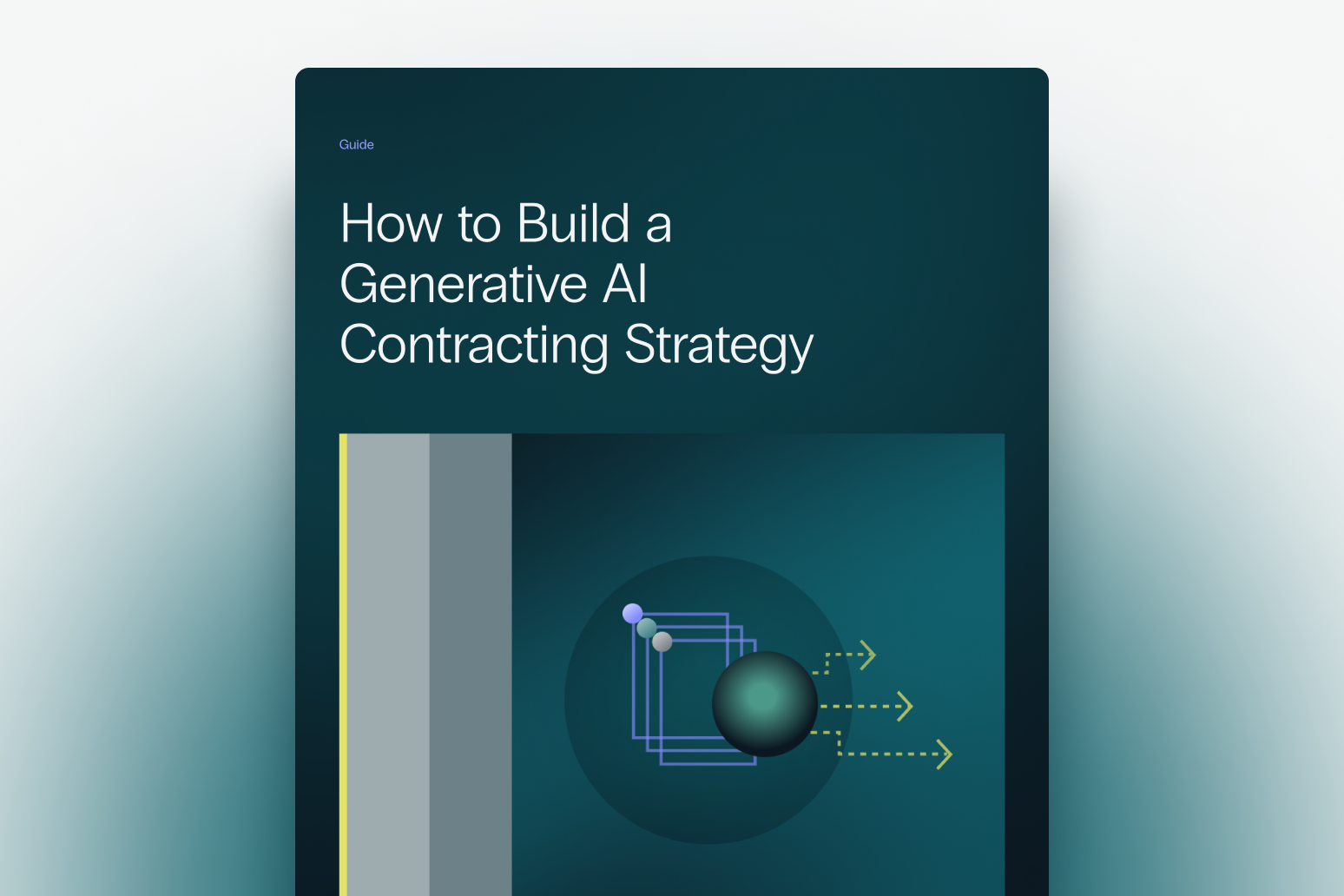CLM Implementation Guide: How to Successfully Implement Contract Lifecycle Management with Sirion

- Last Updated: Oct 13, 2025
- 15 min read
- Arpita Chakravorty
Imagine your organization drowning in a sea of contracts — scattered files, missed renewal dates, confusing obligations, and endless manual follow-ups. Now picture replacing that chaos with a seamless, AI-powered system that guides every contract from creation to renewal, unlocking hidden value and reducing risks. This transformation is what Contract Lifecycle Management (CLM) implementation promises, but actually achieving it requires more than just buying software. It demands a thoughtful, step-by-step approach that aligns people, processes, and technology.
If you’re new to CLM, feeling unsure where to start or how to avoid costly mistakes, you’re in the right place. This guide will walk you through the essential stages of CLM implementation with practical insights, clear visuals, and real-world considerations to give you confidence and clarity.
What Exactly Is Contract Lifecycle Management and Why Does Implementation Matter?
Before diving into implementation, let’s untangle what CLM really involves. Contract Lifecycle Management refers to managing contracts throughout their entire lifespan—starting from drafting and negotiation, through execution, compliance monitoring, and renewals, all the way to archiving or termination.
The purpose of implementing a CLM system is to replace fragmented, manual contract handling with a structured, automated process that:
- Ensures contracts are created quickly and accurately
- Provides a centralized repository for easy retrieval
- Tracks contractual obligations in real time
- Reduces compliance risks and missed deadlines
- Delivers insights for better decision-making
However, a successful CLM implementation is about more than just software installation. It is a business process transformation that touches multiple departments such as legal, procurement, sales, and finance. Doing this well avoids the common pitfall where over 70% of CLM projects fail, mostly due to lack of user adoption and unclear objectives.
Traditional vs. Modern CLM Implementation
To see the contrast clearly, here’s how traditional contract handling compares with modern CLM implementation.
| Aspect | Traditional Contract Management | Modern CLM Implementation |
| Storage | Scattered files/folders | Centralized digital repository |
| Tracking | Manual reminders | Automated alerts and dashboards |
| Risk | High risk of missed deadlines & errors | Reduced risk with AI-powered monitoring |
| Efficiency | Time-consuming, manual | Streamlined, faster cycle times |
Understanding the contract lifecycle stages is the first step to seeing why implementation must be planned thoughtfully.
To learn more about the contract lifecycle itself, you can explore an in-depth overview of contract lifecycle management that explains foundational concepts clearly.
The Stepwise CLM Implementation Journey: What You Need to Know
Implementing CLM is not a one-off project but a phased journey. Here is a breakdown of the key stages, each building on the last, from initial preparation through to ongoing optimization.
Assess Current Contracting Processes and Needs
Start by conducting an honest assessment of your existing contract processes, pain points, and business requirements. What gaps exist in visibility, compliance, automation, or collaboration across teams? This understanding sets precise objectives and shapes your CLM specification.
Engage All Relevant Stakeholders Early
Since contracts touch multiple departments, secure input and buy-in from legal, procurement, sales, finance, IT, and compliance teams. Their perspectives will inform priorities and minimize resistance during rollout.
Choose the Right CLM Solution Aligned with Your Goals
Selecting a CLM platform should not be a purely technical decision. Beyond features like contract authoring, negotiation tools, and repository capabilities, prioritize solutions that support post-signature performance tracking, AI-powered analytics, and seamless integration with your existing ERP or CRM systems.
Pilot with a Proof of Concept (POC)
Before a full rollout, run a pilot with a smaller contract segment or business unit. This phased approach enables testing workflows, collecting user feedback, and refining configurations without business-wide disruptions.
Develop Detailed Implementation Plans and Integration Strategy
Mapping out detailed timelines, resource allocation, and process mappings ensures clarity. Integration planning is crucial — your CLM should seamlessly connect with systems such as SAP, Salesforce, or Microsoft 365 to automate data flows and reduce manual effort.
Train End Users and Drive Adoption
Effective training tailored to each stakeholder group is vital. Demonstrate how the new system simplifies tasks and addresses existing pain points, alleviating fears around change. Ongoing support channels further encourage adoption.
Monitor, Measure, and Optimize Continuously
Post-launch, track key performance indicators (KPIs) like contract cycle time, compliance metrics, and user activity. Regular optimization based on data and user feedback sustains benefits and identifies improvement areas.
For more details on each phase, refer to our comprehensive guide on how to implement a contract management system.
Now that you’ve seen the stages of implementation, a common question arises: how long does it take and what will it cost? Understanding these upfront helps set realistic expectations.
How Long Does CLM Implementation Take & What to Budget For?
The timeline for CLM implementation depends on company size, contract complexity, and integration requirements. Here’s a general benchmark:
- Small to mid-sized businesses: 3–6 months, typically focused on digitization and basic automation.
- Large enterprises: 6–12 months or more, especially when integrating with ERP, CRM, and compliance systems.
- Highly regulated industries (e.g., healthcare, finance): Longer due to additional configuration for security and compliance.
What are the typical costs of CLM implementation?
Key cost factors include:
- Software licensing and subscription fees (based on users, features, or contract volume)
- Implementation services such as setup, data migration, and workflow design
- Integration costs for linking CLM with ERP, CRM, and document management systems
- Training and change management to drive adoption
- Ongoing optimization and support post-launch
Pro tip: Treat cost as an investment in efficiency and compliance. Organizations often recover implementation costs quickly through reduced cycle times, lower risk exposure, and better contract visibility.
Navigating Common CLM Implementation Challenges and How to Overcome Them
Understanding potential roadblocks ahead of time equips you to tackle them confidently.
- Insufficient Executive Sponsorship: Without strong leadership support, project momentum stalls. Secure visible executive backing aligned with business priorities.
- Underestimating Cross-Functional Involvement: Excluding key departments results in incomplete requirements and low adoption. Foster collaboration early and continuously.
- Neglecting Change Management: Resistance is normal; proactively address through transparent communication, training, and incremental rollout.
- Integration Complexities: Logistics of connecting multiple legacy systems can create delays or functionality gaps. Engage IT early, prioritize scalable API-based integrations, and align contracts data formats.
- Overcomplicating Workflows: Complex or rigid processes frustrate users. Simplify contract creation and approval flows wherever possible.
- Lack of Measurable Goals: Ambiguous success criteria make it difficult to show value and iterate improvements. Define and track KPIs clearly.
CLM Implementation Best Practices: Setting Yourself Up for Success
While every organization’s contracting environment is unique, some best practices consistently make the difference between CLM success and stalled projects:
- Start with Clear Business Outcomes
Define what you want to achieve — faster contract cycle times, improved compliance, better visibility into obligations — and tie system goals directly to measurable business impact. - Adopt a Phased Rollout Strategy
Resist the urge to “boil the ocean.” Begin with a high-impact use case or business unit, gather learnings, and scale progressively. - Invest in Change Management Early
Communicate benefits, address user concerns, and create champions within each department. A strong adoption plan is as important as the technology itself. - Prioritize Integrations from Day One
Ensure your CLM connects seamlessly with ERP, CRM, and collaboration platforms. Integration eliminates silos and demonstrates immediate cross-functional value. - Balance Standardization with Flexibility
Use standardized templates, clause libraries, and workflows to drive efficiency, but allow flexibility to handle complex, high-value contracts without slowing down. - Track, Report, and Celebrate Quick Wins
Show early ROI with metrics like reduced turnaround time or improved compliance. Celebrating these wins builds trust and accelerates adoption.
These practices transform CLM implementation from a technical rollout into a strategic business initiative, ensuring momentum, adoption, and long-term impact.
CLM Implementation Checklist: 10 Must-Haves for Success
- Secure visible executive sponsorship to maintain momentum
- Define measurable goals and KPIs (cycle time, compliance, adoption rates)
- Engage stakeholders from legal, procurement, sales, finance, and IT
- Conduct a readiness assessment of current contract processes
- Select the right CLM platform aligned with business objectives
- Pilot with a proof of concept before rolling out company-wide
- Map integrations with ERP, CRM, and collaboration tools
- Simplify workflows to avoid over-engineering processes
- Deliver tailored training and create user support channels
- Establish a continuous improvement plan for optimization
Following this checklist helps avoid the common pitfalls where 70% of CLM projects falter and ensures your implementation delivers measurable business value.
CLM Implementation by Industry: Tailoring to Your Needs
While the core implementation steps are universal, each industry brings its own compliance, operational, and contractual nuances. Here’s how priorities shift by sector.
- Healthcare: HIPAA compliance, patient data protection, and integration with EHR systems are top priorities. CLM systems need strict role-based access and audit trails.
- Financial Services: Audit readiness, regulatory reporting, and risk management drive adoption. Advanced analytics and clause libraries for compliance are critical.
- Manufacturing & Supply Chain: Large volumes of supplier contracts and global compliance requirements make automation and milestone tracking essential.
- Technology & SaaS: Fast-moving sales cycles demand tight CRM integrations (e.g., Salesforce) and standardized templates to accelerate deal velocity.
- Government & Defense: Complex procurement rules and security certifications require highly customized workflows and strict access controls.
By tailoring CLM implementation to industry-specific needs, organizations can move beyond generic automation and unlock measurable value in compliance, efficiency, and speed.
How Does Integration Enhance Your CLM Implementation?
Contracts don’t exist in isolation. Integration of your CLM platform with existing enterprise systems is vital to drive end-to-end automation, reduce data silos, and unlock maximum value.
For instance:
- Synchronizing contract data with ERP systems ensures automated invoice validation and payment linkage.
- Linking with CRM platforms streamlines contract generation from sales workflows, reducing errors and approval delays.
- Integration with document management and collaboration tools expedites editing and version control.
Careful API-based integration planning, together with rigorous testing, safeguards data accuracy and user experience.
Learn more about these integration strategies and best practices with our resource on CLM with enterprise integrations.
Why Sirion for CLM Implementation?
Choosing the right CLM platform is more than a feature checklist — it’s about ensuring adoption, scalability, and measurable impact. This is where Sirion stands apart as an AI-native CLM platform trusted by global enterprises.
Key strengths that accelerate implementation success:
- AI-Native Foundation: Sirion’s AI models are trained on over 10 million enterprise contracts, enabling accurate data extraction, intelligent risk detection, and obligation tracking from day one.
- Faster Time to Contracting: Automated workflows streamline contract creation, review, and approval, reducing cycle times and improving business agility.
- Deep Integrations: Sirion connects seamlessly with ERP (SAP, Oracle), CRM (Salesforce), and collaboration tools (Microsoft 365, Slack) to eliminate silos and automate data flows.
- Explainable AI Agents: From redlining to compliance monitoring, Sirion’s agentic AI delivers recommendations you can trust, backed by transparency and audit trails.
- End-to-End Visibility: Post-signature analytics and dashboards track compliance, renewals, and performance, turning contracts into strategic assets rather than static documents.
By aligning advanced AI with enterprise-ready integrations and robust governance, Sirion helps organizations implement CLM faster, drive adoption across teams, and maximize ROI.
How to Measure Success and Keep Improving Your CLM System
Tracking outcomes with clear CLM implementation success metrics enables you to demonstrate business impact and refine the system continuously.
Key metrics include:
- Average contract cycle time from request to signature
- Percentage of contracts compliant with company policies
- Timeliness of deliverables and renewals
- User adoption rates and satisfaction scores
- Cost savings from process efficiencies or risk avoidance
Regular audits and user feedback loops support continuous improvement. Aligning these insights with organizational goals keeps your CLM system relevant and effective.
Taking Your First Step Toward Successful CLM Implementation
Implementing Contract Lifecycle Management isn’t just a software upgrade — it’s a business transformation. By assessing your current processes, aligning stakeholders, planning integrations, and continuously optimizing, you can turn contract management from a reactive task into a strategic advantage.
The most successful implementations don’t happen all at once. They follow a phased, practical roadmap: start with clarity on objectives, launch with a pilot, scale with adoption, and sustain with measurable improvements. When done right, CLM implementation accelerates contract cycles, strengthens compliance, and unlocks value that manual approaches can’t deliver.
Frequently Asked Questions (FAQs)
What’s the biggest mistake companies make when starting CLM implementation?
Jumping straight to software selection without defining business goals. Implementation should begin with clear objectives and success metrics, not just tool features.
How do I build a business case for CLM?
Show measurable ROI through metrics like reduced contract cycle times, fewer missed renewals, improved compliance rates, and cost savings from automation. Linking benefits to strategic business priorities strengthens your case.
How do I know if my organization is ready for CLM?
Signs include: growing contract volume, frequent compliance gaps, reliance on manual processes, and difficulty locating contracts quickly. A readiness assessment helps clarify priorities.
Do I need external consultants for CLM implementation?
Not always, but consultants can accelerate setup if you lack in-house expertise. Many organizations succeed with vendor-led onboarding supported by internal champions.
How does CLM connect with enterprise digital transformation goals?
CLM is often a cornerstone of digital transformation because it directly impacts revenue, compliance, and supplier relationships. It also integrates with ERP and CRM systems, creating a seamless data flow across the enterprise.
How do I future-proof my CLM system?
Choose a platform that supports AI-driven analytics, API-based integrations, and configurable workflows. Regular updates and scalability ensure it evolves with your business.
Can CLM support sustainability and ESG initiatives?
Yes. Modern CLM platforms can track ESG clauses, monitor supplier obligations, and generate compliance reports, helping organizations align contracts with sustainability goals.
What is the ideal duration of CLM system implementation?
The duration depends on company size, contract complexity, and integration needs. On average, small to mid-sized businesses can implement CLM in 3–6 months, while large enterprises may take 6–12 months or more. Highly regulated industries may require longer due to additional compliance and security configurations.
Additional Resources

Sirion’s Guide to Implementing a Contract Management System

